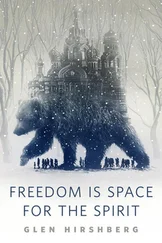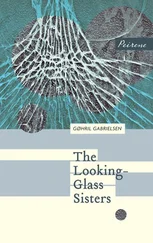Thus It Is Proven That Indians Are Inferior
(According to the Conquistadors of the Sixteenth and Seventeenth Centuries)
The Indians of the Caribbean islands commit suicide? Because they are lazy and refuse to work.
They go about naked, as if their entire bodies were faces? Because savages have no shame.
They know nothing of the right of property, share everything, and have no desire for riches? Because they are closer to the apes than to man.
They bathe with suspicious frequency? Because they are like the heretics of the sect of Mohammed, who burn well in the fires of the Inquisition.
They believe in dreams and obey their voices? The influence of Satan or plain stupidity.
Homosexuality is practiced freely? Virginity has no importance? Because they are promiscuous and live at hell’s door.
They never hit their children and they let them run free? Because they are incapable of punishment or discipline.
They eat when they are hungry and not at mealtimes? Because they are incapable of dominating their instincts.
They adore nature, which they consider their mother, and believe she is sacred? Because they are incapable of religion and can profess only idolatry.
Thus It Is Proven That Blacks Are Inferior
(According to the Thinkers of the Eighteenth and Nineteenth Centuries)
Voltaire, anticlerical writer, advocate of tolerance and reason: Blacks are inferior to Europeans but superior to apes.
Carolus Linnaeus, classifier of plants and animals: The black is a vagabond, lazy, negligent, indolent, and of dissolute morals.
David Hume, master of human understanding: The black might develop certain attributes of human beings, the way the parrot manages to speak a few words.
Etienne Serres, sage of anatomy: Blacks are condemned to be primitive because of the short distance between their belly buttons and their penises.
Francis Galton, father of eugenics, the scientific method for impeding the propagation of the unfit: A crocodile will never become a gazelle, nor will a black ever become a member of the middle class.
Louis Agassiz, prominent zoologist: The brain of the adult black is equivalent to that of a seven-month-old white fetus; the development of the brain is blocked because the black cranium closes much earlier than the white cranium.
Two hundred years ago, the German scientist Alexander von Humboldt, who truly understood Spanish America, wrote that “lighter or darker skin determines the class a man occupies in society.” Those words continue to paint a fairly accurate picture not only of Spanish America but of all the Americas, from North to South, even though Bolivia recently had an Indian vice president and the United States can show off a well-known black general brimming with medals, some prominent black politicians, and successful black businessmen.
At the end of the eighteenth century, the few Latin American mulattos who had become wealthy could buy certificados de blancura from the Spanish crown or cartas de branquidão from the Portuguese crown, testaments to a sudden change of skin color that bestowed a corresponding change in rights. Over the centuries, money continued to be capable of such alchemy. In exceptional cases, so could talent: the Brazilian Machado de Assis, the greatest Latin American writer of the nineteenth century, was mulatto but, as his compatriot Joaquim Nabuco liked to say, his literary talent turned him white. “Racial democracy” remains a social pyramid with a summit that is white or pretends to be.
The situation of Indians in Canada is reasonably similar to that of blacks in the United States: they make up less than 5 percent of the population, but three out of every ten prisoners are Indian and their infant mortality rate is twice that of whites. In Mexico, the average wage for Indians is barely half the national average and the rate of malnutrition is double. Rarely are black-skinned Brazilians found in universities, on soap operas, or in advertisements. Official Brazilian statistics show many fewer blacks than there really are, and the followers of African religions are listed as Catholics. In the Dominican Republic, where for better or worse everyone has some black ancestor, identity documents register skin color but the word “black” is never used: “I don’t put down ‘black’ so they won’t be disgraced their whole lives,” an official explained to me.
The Dominican border with Haiti, a black country, is called “the Bad Pass.” Throughout Latin America, classified ads that ask for “well-groomed employees” are really asking for light-skinned ones. A black lawyer in Lima told me judges are always confusing him with the defendant. In 1996, the mayor of São Paulo had to issue a decree to open elevators in private buildings to everyone. They had usually been off-limits to the poor, which is to say, to blacks and dark-skinned mulattos. At the end of that year, just before Christmas, the Nativity scene in the cathedral of Salta in northern Argentina caused a scandal. The shepherds and the three kings, the Virgin and Saint Joseph, even the baby Jesus were all Indians, with Indian clothes and features. Such a sacrilege could not last. After expressions of indignation from local high society and threats of arson, the Nativity scene was removed.
At the time of the Conquest it was already clear that Indians would be condemned to servitude in this life and hell in the next. There was plenty of evidence of Satan’s reign in the Americas. Among the more irrefutable proofs: homosexuality was practiced freely in the Caribbean and elsewhere. In 1446, King Alfonso V ordered Portuguese homosexuals burned at the stake: “We order and dispose by general law that any man who commits such a sin under any guise shall be burned and reduced to dust by fire, so that memory of neither his body nor his burial shall ever be heard.” In 1497, Ferdinand and Isabella, the Catholic monarchs of Spain, ordered burned alive those guilty of the “nefarious sin of sodomy,” who previously had been stoned to death or hanged. The conquistadors offered their own worthy contributions to the technology of punishing homosexuals. In 1513, two days before what is called the discovery of the Pacific Ocean, Captain Vasco Núñez de Balboa “dogged” fifty Indians who offended God by committing “the abominable sin against nature.” Instead of burning them alive, he threw them to dogs trained to devour human flesh. The spectacle took place in Panama by the light of bonfires. Balboa’s dog, Leoncico, earned the salary of a second lieutenant.
Nearly five centuries later, in May 1997, in the small Brazilian city of São Gonçalo de Amarante, a man killed fifteen people, then committed suicide by shooting himself in the chest because people in town were saying he was gay. Ever since the Conquest, the established order has worked feverishly to uphold the biblical tradition not by socializing worldly goods — God forbid — but by perpetuating its most horrendous phobias.
Today, the gay and lesbian movement has won broad freedoms and respect, above all in the North, but cobwebs still cloud our vision. Too many people see homosexuality as a sin that cannot be expiated, an indelible and contagious stigma or an invitation to ruin that tempts the innocent. The sinners, whether viewed as diseased or delinquent, constitute a public threat. Many homosexuals fall victim to “social cleansing groups” in Colombia, death squads in Brazil, or any number of fanatics in uniform or civilian clothes around the world who exorcise their own demons by beating or stabbing or shooting. According to anthropologist Luiz Mott of the Gay Group of Bahía, no less than eighteen hundred homosexuals have been murdered in the past fifteen years in Brazil. “They kill one another,” say the police. “That’s how fags are.” One hears exactly the same explanation for wars in Africa (“That’s how blacks are”) and for massacres of Indians in the Americas (“That’s how Indians are”).
Читать дальше











